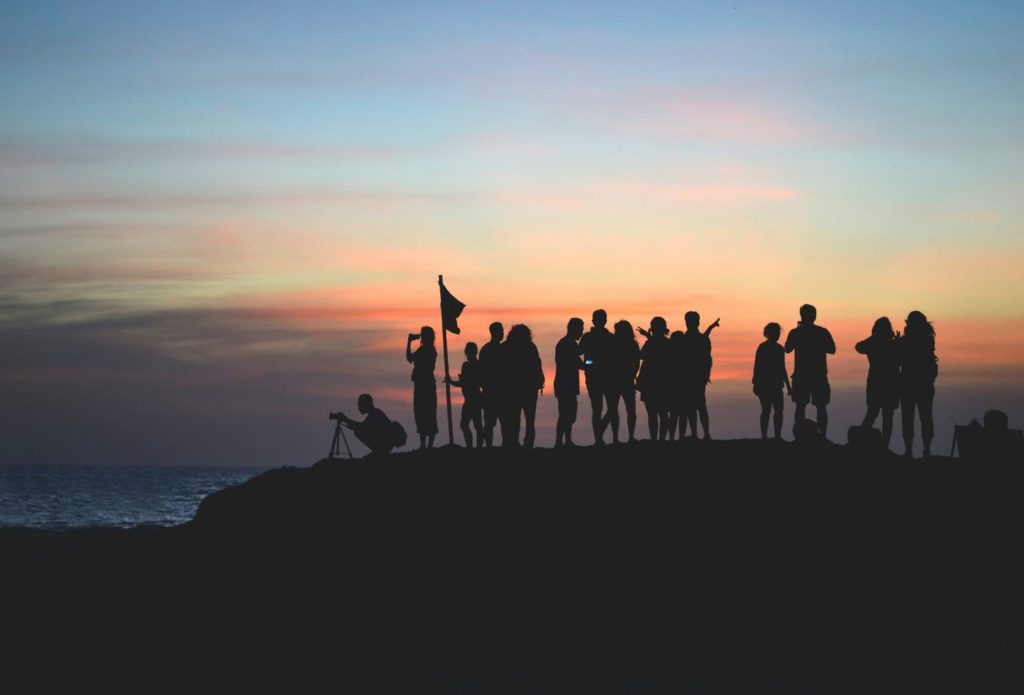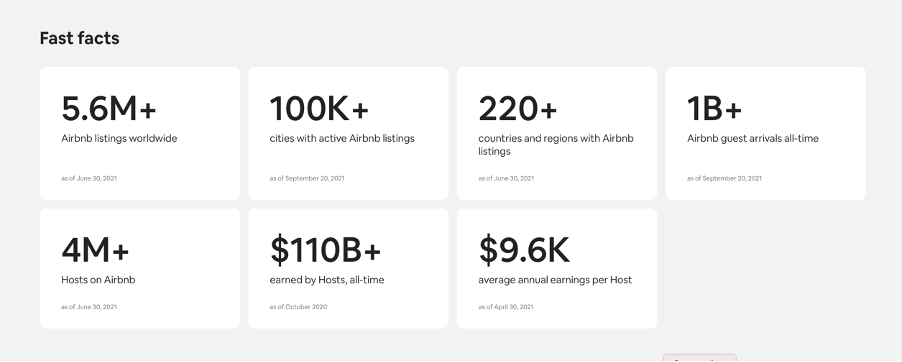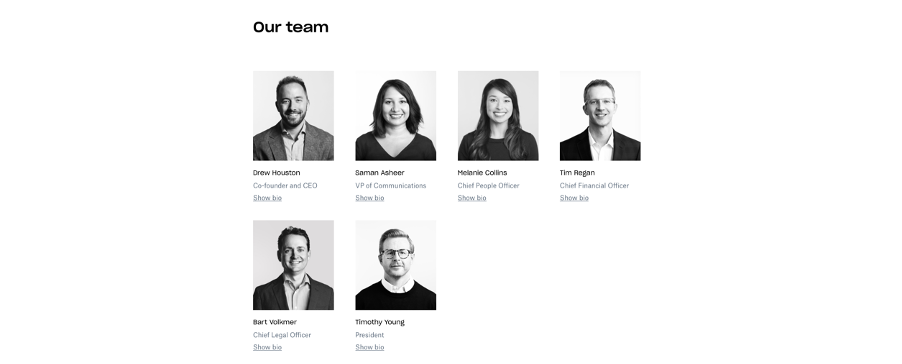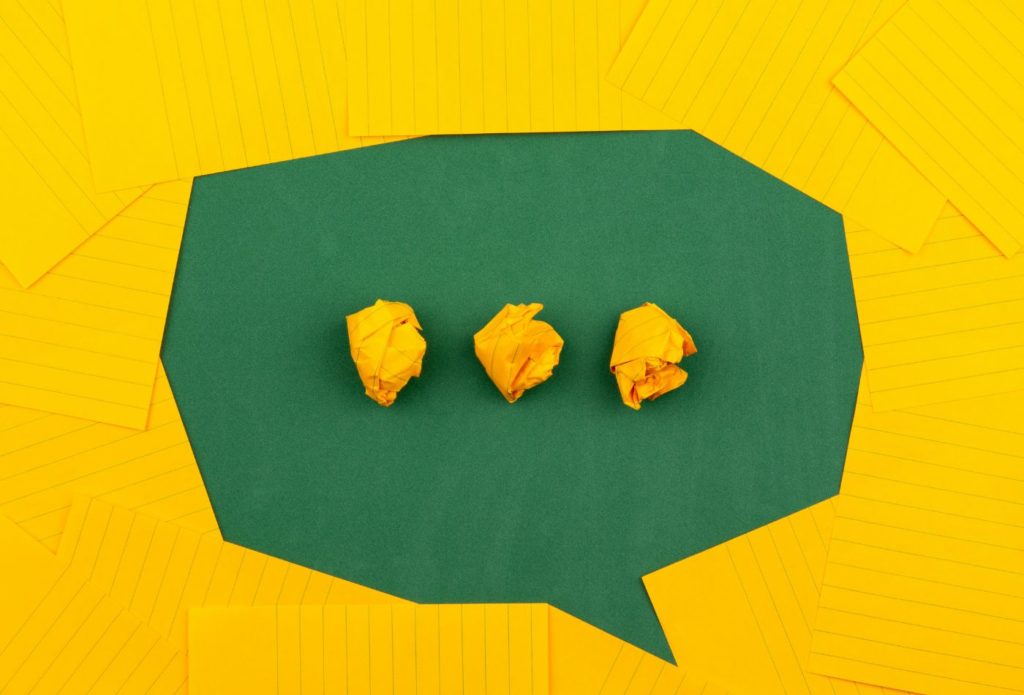In a previous blog, we revealed our content checklist for new websites and the About page came in at the top as one of the foundations that underpin your site’s credibility and SEO strategy. So, with that in mind, we thought we’d dive in and take a closer look at what makes this page so important. In this guide, we’ll share our top tips on how to write an ‘About Us’ page that stands out and, ultimately, converts. We’ll cover About Us page design, copywriting and promotion, with some About Us page examples from brands who have nailed this vital webpage. Let’s get into it.

But first, what is an About Us page?
Your About page tells your story – a story that captures your current ambitions and position through the lens of your origins and your aspirations. It can be a place to share your values and your mission but also reflect your ideal customer.
It can also be an opportunity for users to meet you and your team and discover any other essential snippets of information that could be important to users as they navigate the marketing funnel – company reports, for example, awards, press or other recognitions. Sounds simple, right? Sure, it does, but it shouldn’t be overlooked as easy. An ‘About Us’ page needs careful attention when writing. Continue reading for more information on how to write an about us page and why it’s a vital page on your website.
Why is your About Us page important?
With your website influencing 97% of your client’s buying decisions, your About page cannot miss a trick.Shopify says, “Your ‘About Us’ page is a home for your founding story and a place to show off your business wins. It’s also a sales page that answers new customers’ most pressing questions about your business, outside of why they should buy its products.”

Your ‘About Us’ page is just as important as your homepage and product pages. This page is all about the ‘why’ behind what you do; it’s your one chance to really sell who you are as a brand. Here are three more reasons why you should prioritise writing an ‘About Us’ page that packs a punch:
- It offers an opportunity for your brand to share what sets you apart from competitors. Why should a customer choose your products over another? This is where you tell them.
- It lets you dive behind the scenes and share your process with your customers. People like to know how and why things are made and insight into this, especially regarding the products or services they love, is crucial for all brands. Customers love transparency.
- It gives brands the chance to sell their mission and values. When a customer is emotionally invested in the steps a brand takes to do or achieve something, they’re more likely to offer their loyalty.
Consequences of not having an About Us page
But despite the importance of your site’s about us page design, it’s one of the pages most frequently ignored by site owners: a classic victim of the ‘set up and forget’ approach to website management. And failing to make the most of the ‘About Us’ page has its consequences:
- Lack of trust: Visitors may find it difficult to trust a website or brand that doesn’t provide information about the people behind it.
- Missed connection: Without an ‘About Us’ page, you miss an opportunity to connect with your audience emotionally.
- Reduced transparency: A lack of transparency may make some users feel sceptical about your brand and its offerings.
- Fail to stand out: Your USP might not be communicated effectively or as clearly with our writing an ‘About Us’ page.
- Impacts SEO: Search engines value content-rich pages, and forgetting your ‘About Us’ page skips out on a chance to provide such to Google.
- Limited social proof: Your ‘About Us’ page is often home to testimonials and case studies that prove your product’s or service’s legitimacy.
Ignoring your ‘About Us’ page is a mistake. Done well, this often-neglected page can convert and win the loyalty of potential customers. Let me show you how.
Before you write an About Us page, you need to start at the beginning – the five W’s
Before you dive into piecing copy and testimonials together, you need to ask yourself and jot down answers to the following questions. This is a key step when considering how to write an about us page.
- Who are you? Tell your personal story.
- What is your USP? What sets you apart from other businesses?
- When was your ‘eureka moment? When did you decide to start your business?
- Why did you set up your business? This is an opportunity to speak directly to your target customers and show how your company was designed just for them.
- Where are you now? Talk about your team, your office/s, and your clients and demonstrate how the business has succeeded and grown. Prove to potential customers that you’re worth putting their faith in.
- How are you going to make an impact? Show potential customers how you’ve recognised a pain point but found a solution.
Knowing the answers to these questions will help you thoroughly organise your ‘About Us’ page. Organise your answers into sections; where some may be useful for helping you structure your brand story; others may help write your ‘meet the team’ section. The next step in writing your website About Us page? Structuring your content into a narrative that communicates your values, describes your services, and – ultimately – sells.

How to craft your narrative
The best About pages tell a story – and why is that? Neuroscience proves that storytelling is the best way to capture people’s attention, glue information into their brains, and forge loyalty. Your audience is programmed to crave and seek out great stories, so creating and nurturing an enticing narrative within your about page’s copy is integral in making a mark on potential consumers.
Lucky for you, we recommend a five-step formula to help you master your About page design and create a narrative that ticks all the boxes.
It’s pretty straightforward. But before you dive in, make sure you are clear on your brand’s tone of voice. And if your business doesn’t have tone of voice guidelines, you should probably get to writing those first – or at least have a rough idea of where you’re aiming (you can do this quickly by having some reference points in terms of other websites/brands you like or publications that your target customer is likely to read). Writing an About Us page with a tone of voice allows your brand personality to shine through.
Step one: set the scene
The next step in writing an About Us page is where you will introduce yourself and your business. Be personal and accessible in your writing. The key here is to answer a few common questions that lead consumers to the About page in the first place. These include:
- What does your business do?
- Is your business legitimate?
- What is the history of your business?
Delivering the most important and relevant information above the fold is essential in making your reader’s lives as easy as possible. Consumers will be put off if they have to search so hard for answers. Answer their question(s) without making them scroll.
Step two: pinpoint the pain point
It’s time to tell your reader about your ‘eureka’ moment, the events that led you to identify a common problem, or the ‘pain point’ in your chosen niche or industry. This is your ‘why’ from earlier – why did you start this business?
Speak directly to your reader and avoid jargon or overly fluffy language. Don’t beat around the bush by being too descriptive or redundant. Be confident in your approach but remember to keep it understandable.
Step three: rise to the challenge
Explain how you set out to find a solution to the pain point recognised earlier and the obstacles you faced along the way. How did you develop your product? Are there any significant milestones you’ve hit? What were your biggest challenges? Be open and honest about the foundations of your business and potential consumers will find loyalty and trust in your products and ideas.
Step four: identify your unique selling point – the solution
You located a gap in the market and created a unique product or service to fill it – now it’s time to tell your reader what sets you apart from competitors. How do you intend to make an impact with your product or services? What are your values or company mission? Locate and shout about the reasons why someone should choose your business over another.
Step five: your happy ever after
Think about your company’s success so far and paint a picture of its future. Are there any moments in your business journey that stand out? Think of your proudest moments and state your mission or goals for the immediate future.

Elevate your brand story and think about user experience
38% of people will stop engaging with a website if the content or layout is unattractive. Long paragraphs of text aren’t going to work – they may deter customers from reading altogether. Consider breaking up your text with other interactive features to keep that bounce rate low and ensure your site’s users stick around. Here are a few About Us page design elements to consider:
- Visuals: A picture paints a thousand words. Using images, diagrams and videos throughout your page is a great way to help explain your point further. Break up your copy into digestible chunks and enhance user experience.
- Meet the team: People love talking to people. Putting a face to your brand helps to humanise it, communicate your company culture, and shine a light on the people who power your business, says Shopify.
- Timeline: Interactive timelines are an accessible, easy-to-navigate way of communicating your business’s history. Movember do this really nicely.
- Press mentions, awards, and testimonials: Share how you impact your customers and make waves in your industry. Customers love to see the proof. Stats and facts will also go down a treat here.
- Social proof: Social media influences 71% of consumer buying decisions. If you’re making the most of your social media game, connect it to your site to funnel users to that all-important follow button.
- A sign-up or subscribe form: Aweber revealed that when QualityStocks added an opt-in form on their About page, it resulted in a 158% increase in subscriber growth.
- A call to action: The most compelling copy paired with all the customer testimonials in the world won’t mean anything if your readers can’t figure out what to do next. The solution? A clear call to action.
Writing tips for an effective About Us page
Brand story aside, when writing copy for any of the above design elements on your ‘About Us’ page, there are conventions you should follow to make the most of your words. Here are our top tips for writing an About page:
Emphasise your brand values and mission
Clearly articulate your company’s values and mission. Doing this helps visitors understand the principles guiding your entire business. To pinpoint your values and mission you should:
- Reflect on your purpose: Start by asking fundamental questions about why your business exists. What inspired its creation? What problems do you aim to solve or needs do you address?
- Identify core principles: Define the principles that are non-negotiable for your business. These are the values that underpin every decision and action. Identify the principles that matter most to your brand, whether it’s transparency, innovation, or customer-centricity.
- Understand your audience: Consider the values and priorities of your target audience. Conduct surveys, engage in conversations, and gather insights to understand what resonates with your target customer.
- Evaluate your USP: What sets your business apart? Identify the unique qualities, products, or services that make you stand out. Your brand values should reflect and amplify these differentiators.
- Look inward and outward: Examine both internal and external perspectives. Internally, talk to your team about the values they believe the company upholds. Externally, seek feedback from customers and stakeholders. This dual perspective can provide a comprehensive view of your brand identity.
- Craft a clear mission statement: Summarise your purpose and values in a concise mission statement. This statement should convey the essence of your brand, its goals, and the impact it aims to make. Keep it clear, memorable, and aligned with your values.
- Test and refine: Share your mission and values with a select audience, whether it’s your team or a group of customers. Gather feedback and be open to refinement. Your brand values and mission should evolve organically as your business grows.
Head behind the scenes
People love exclusive content, and if they feel like they’re getting behind the scenes into your brand, they’re more likely to stick around and keep reading for longer. When heading behind the scenes with your customers, you could:
- Show your company culture. This could include traditions, your work environment, your workplace or any unique aspects that define the atmosphere within your organisation.
- Highlight your company’s social responsibility. It’s all well and good to tell people you care about something, but it’s much more effective if you show them. When writing your About page, consider finding ways to showcase our company’s commitment to social responsibility, sustainability, or community involvement.
- Showcase achievements and recognition. Feature any awards, certifications, or notable achievements your business has earned to build credibility and trust with your target audience.
- Get to know the team. Give your employees the opportunity to write a few sentences about themselves and their role in your company. Meeting the faces behind the brand will make it easier for customers to empathise with your mission.
Be authentic
Authenticity is key. You need to be genuine in your communication and avoid writing exaggerations or misleading information on your ‘About Us’ page. To be authentic in your copywriting you should:
- Use relatable language. Write in a conversational tone that resonates with your target audience. Avoid jargon that might alienate or confuse visitors.
- Keep it concise. While sharing your story is important, keep the content concise and focused. Visitors should be able to grasp the key points quickly.
- Use human storytelling techniques. Employ storytelling techniques such as narrative arcs, anecdotes, and descriptive language to make your brand story more engaging and memorable. Much of this, including how you use these techniques, will depend on your tone of voice.
- Integrate your brand’s personality. Infuse your brand’s personality into the content when writing an About Us page. Whether your brand is humorous, serious, or innovative, make it known in the language and tone used when writing your ‘About Us’ page.

What else do you need to consider when writing your about page?
Your ‘About Us’ page doesn’t stop at excellent copy. While your words are important, they will only get results when paired with the features and technical optimisations that keep users engaged. Here are a few things you need to consider:
Use high-quality photos
We mentioned above that visuals are essential when writing an about page. And the quality of these images or videos is just as important. The visuals you use should be shot professionally. But avoid images that are too large as these will slow down your site speed.
Invite engagement
Encourage users to connect with your brand. Provide links to your social media accounts and a sign-up form for your newsletter, and make known the best way a customer can get in touch if they need to.
Consider mobile users
Ensure that the “About Us” page is mobile-friendly. Many visitors may access your site on smartphones or tablets, so you shouldn’t use any interactive elements exclusive to desktop web applications.
Optimise your site for SEO
Like any page on your site, it needs to be SEO-optimised. To do this, you need to:
- Keyword integration: Include relevant keywords naturally in the headline, subheadings, and body text.
- Strategic headline and meta description: Craft a compelling headline with a primary keyword and write a concise meta description for better click-through rates.
- Alt text: If your “About Us” page includes images, add descriptive alt text to optimise for image searches.
- Page load speed: Optimise the page load speed by compressing images and minimising unnecessary elements. A faster-loading page is favoured by search engines and enhances user experience.
- Internal linking: Link to other pages on your website to enhance SEO and encourage user exploration.
- Structured data markup: Use schema markup to provide search engines with additional context about your content. This can result in rich snippets, such as star ratings or publication dates, appearing in search results.
- Regular updates: Keep the page current with updates about your business, team, or achievements to signal activity to search engines.
Where to advertise your About page?
Your site structure and navigation are just as important to user experience. So where should you advertise your About page? You have a few options:
- Your site’s main navigation menu
- Your site’s footer
- A sidebar
You want to think about ensuring your About page is accessible no matter where you are on the site – don’t make a potential customer search for the good stuff. Also, make sure you’re making the most of internal linking opportunities. By giving Google links to follow along with descriptive anchor text, you can indicate to Google which pages of your site are essential, as well as what they are about, says Moz.
Now we’ve covered how to write an About Us page and now you’ve got the formulas to ace your brand’s About page; let’s look at a few killer About Us page examples.
Writing an ‘About Us’ page examples
Airbnb: In this about us page example, Airbnb uses statistics to visually represent its masses of success. For new customers who might feel concerned about staying in or hosting an Airbnb, it’s hard to ignore the 2m+ people who already do.

Marie Forleo: Marie Forleo structures her About page similarly to a long-form letter to the reader. It tells her story in the format of an interactive autobiography, situated between animated text and vibrant images, before refocusing on the reader with a section that’s appropriately titled “Which brings me to you.”

Pact Coffee: Earlier, we spoke about the importance of humanising your brand. Pact hits the nail on the head in this about us page example by including a video of its founder explaining the company’s core values. Not only does this give you insight into the man behind the brand, but the video format itself is quick and very easy to digest.

Dropbox: Dropbox’s about page is simple, showcasing their mission and putting emphasis on what they have built. The app that helps people stay organised, with a promotion of an easy life for its customers at its core, puts its team at the forefront of its about page.

Moz: A lot has happened since Moz was founded in 2004, but the company has found a humble way to share its milestones using a fun and clean design that incorporates clear headers, concise blurbs, and little graphics to break up the text. It’s readable and easy to navigate – and it answers all of your questions too.

Frequently asked questions when writing an ‘About Us’ page
How long should an ‘About Us’ page be?
When writing an About Us page, it should be concise yet comprehensive, typically ranging from 300 to 500 words. Focus on crucial information without overwhelming the reader.
Should I use a formal or informal tone on the ‘About Us’ page?
The tone should align with your brand’s personality. It can be either formal, informal or a blend of both, depending on the nature of your business and your tone of voice guidelines.
How can I make the ‘About Us’ page more engaging?
Use storytelling techniques, incorporate multimedia elements like images or videos, and ensure the content is relatable and authentic. Find ways to break up big walls of text and ensure your copy is scannable. Make sure you include a CTA to direct users to the next step, too.
How often should I update the ‘About Us’ page?
Regularly update the page to reflect any changes in your business, such as new team members, achievements, or shifts in your mission and value. We recommend setting a reminder every quarter to ensure it’s up to date.
Can I include a brief FAQ section within the ‘About Us’ page?
Yes, incorporating a brief FAQ section can address common queries and provide visitors with quick, relevant information. You want everything a customer might need to know to be accessible to them from the get-go.
Should I include the ‘About Us’ page in the navigation menu?
Yes, definitely. Including it in the menu will make it easier for customers to find the information they want. We recommend including it in the footer of your site, too.

How can we help?
When your business is new to the game, you might feel like you haven’t got much to say on your About page. But you’d be wrong. If you have an idea, can pinpoint your audience and know your industry back to front, you can easily get started. Expanding upon your About page as you grow and hit crucial milestones is essential – there’s nothing worse than an outdated page.
Carve out time to optimise and update your brand page regularly. Monitor analytics, look for broken links and stay on top of your SEO to get the most out of this pioneering page.
At Big Star, we offer SEO and Brand Storytelling copywriting services to help elevate your site’s about-page game. If you want your content to cut through the online noise, it shouldn’t just talk. It needs to sing. Consumers love vibrant brands, and so does Google. And lucky for you – we are the experts for the job. Get in touch to find out more.
